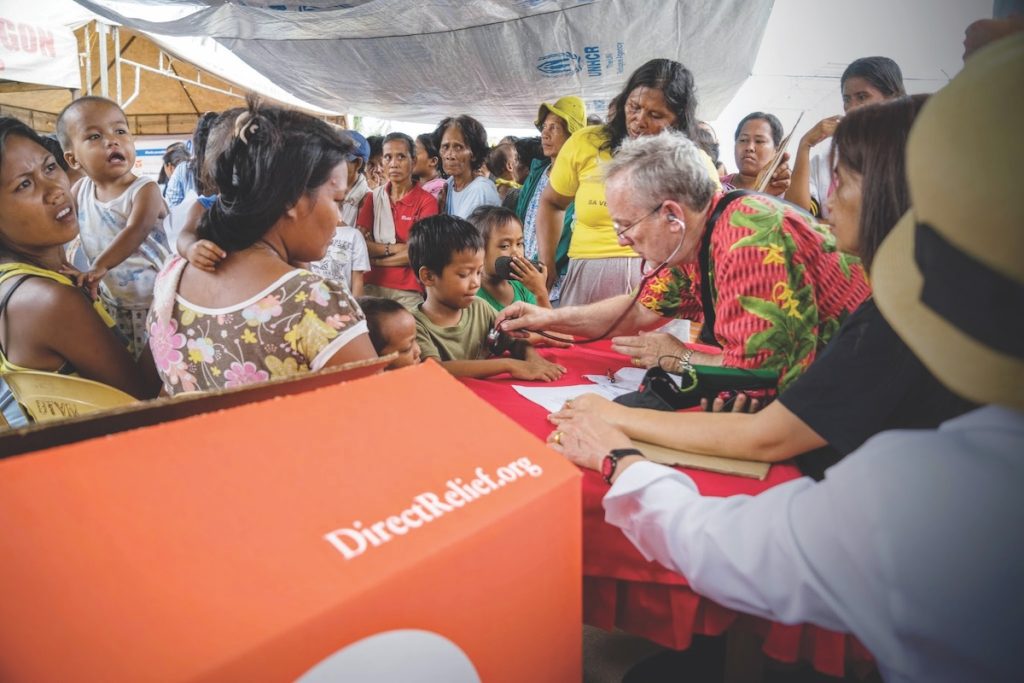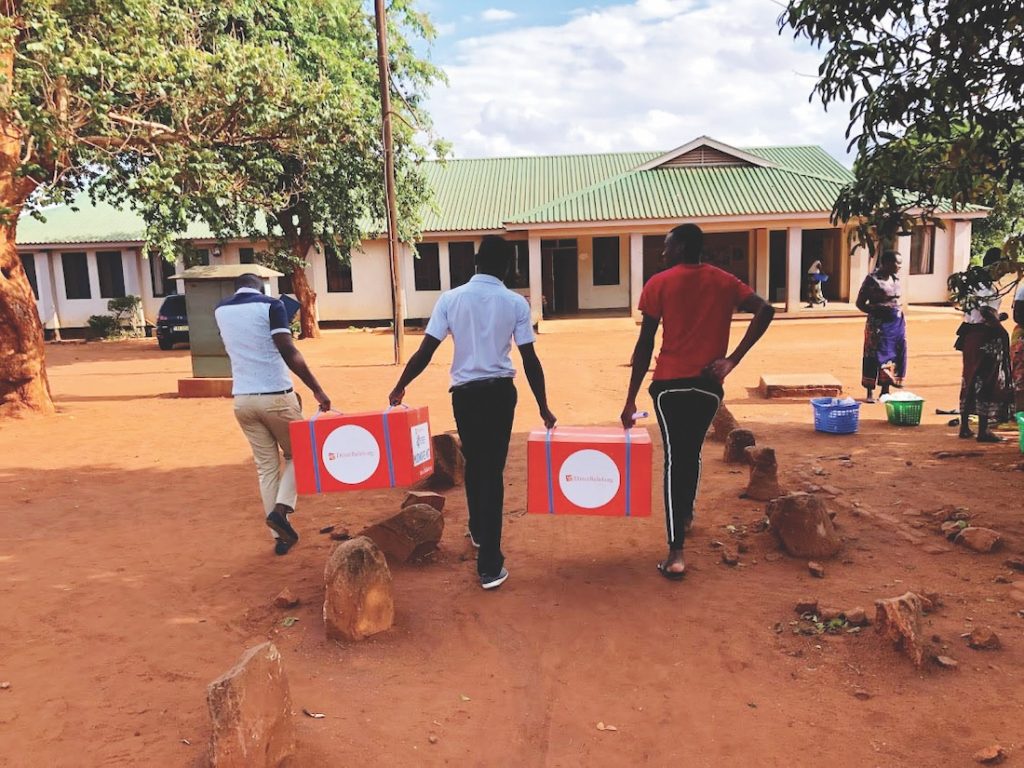Direct Relief

At the end of July, Direct Relief President and CEO Thomas Tighe announced his decision to step down from his role at the end of the year after 24 years leading the organization, a period that saw unprecedented expansion of the nonprofit’s critical work to improve the health and lives of people affected by poverty and emergencies around the world.
“There’s never a great time to leave a job that you love, but if there is a good time, it would have to be when there’s money in the bank, good momentum and a good team in place,” Tighe said. “Direct Relief has all those things right now. It’s as financially healthy as it’s ever been, our work has ever increasing momentum, and there’s a great group of people working here. So I’m really confident that they’ll do fine without me while I seek out what’s next for me while there’s still gas in the tank.”
Tighe wasn’t around when Direct Relief was founded in Montecito in 1948 by William Zimdin, who had fled Europe during World War II. The organization’s first assistance packages were put together at his estate near the Montecito Country Club, which he owned. When Zimdin died three years later, other Montecito residents joined in to further the nonprofit’s humanitarian mission. Direct Relief has been funded entirely by philanthropic support ever since, and village residents have continued to serve as board members and supporters over the decades.
But under Tighe’s near quarter-century leadership, Direct Relief has expanded exponentially to become the fifth largest charity in the United States and among the largest providers of charitable medications within the U.S. and globally. During his tenure, funded entirely with private philanthropic support, Direct Relief has provided over $16 billion in essential medicines, equipment and supplies and more than $350 million in grants to health organizations in 136 countries and all U.S. states and territories. Tighe has led the organization’s responses to domestic and international disasters, from the 2004 Asian Tsunami to Hurricane Katrina and Maria and the war in Ukraine, in which the organization’s ongoing support has totaled $1.5 billion.
“The scope of what we do is relatively narrow, because we’re only focused on health and medical needs,” Tighe said. “And prescription drugs are a heavily regulated industry. We decided to focus on what we were uniquely well accredited and positioned to do – allowing and providing for people to have access to medications essential for their health that they otherwise would not receive, either because they can’t afford them, or in times of disasters.”
What also sets Direct Relief apart is its commitment to address those gaps thoughtfully and respectfully, as well as efficiently – and on a purely humanitarian basis, without regard for politics or any other potential conflicts or biases.

“Unfortunately, those gaps have gotten larger over the past 24 years, with the big natural disasters around the world where we’ve been able to get deeply involved,” Tighe said.
While the organization operates around the world, Direct Relief has also never lost sight of its local community.
“Santa Barbara itself has been a microcosm for all the things that we see internationally,” Tighe said. “We’ve had the tragic mudslide, massive fires, flooding, loss of life, and even mass casualty events from the coastal shootings in Isla Vista and Goleta. Direct Relief has been able to retain a hyper-local focus in being a good citizen organization doing whatever we can in these types of events as well as to address poverty issues. What we’ve learned here has been brought to the rest of the country and around the world. It’s important to retain that mindset, even though the organization has gotten a lot bigger and is able to do a lot more at scale… Every emergency is local to someone, and it’s important to recognize that as you come in to assist; with seriousness about the work but also a soft touch.”
In recent years, Direct Relief has put some of its attention and dollars toward providing the ability to continue necessary care for patients even before disaster strikes through its Power for Health Initiative. The program seeks to bring clean, renewable backup power to community health centers and free clinics to ensure they can deliver critical healthcare services during power outages. The initiative provides grants to these centers and clinics in vulnerable communities for the installation of off-grid, renewable, reliable power systems, improving resiliency and ensuring continuity of care.
The idea came about in the wake of Hurricane Maria, which devastated Puerto Rico in 2017, crippling the power grid for days and weeks on end.

“We could provide the medications, but things like insulin and vaccines require cold storage, so they couldn’t keep them properly,” Tighe explained. “We’re incredibly dependent on electronic devices in healthcare. Everything doctors use to interact with patients – diagnostic tools, medical records, scanning, blood work – relies on electricity, except a stethoscope. A power outage within healthcare brings everything to a grinding halt. We want to make sure that these places, on which the least fortunate rely for their care, are as stable and robust as possible.”
In recent months, Power for Health has helped to install microgrids at local clinics in Santa Maria and Ventura, as well as in other states in the country, including two sites in North Carolina where microgrids came online right before Hurricane Helene and Milton hit.
Direct Relief was also able to respond rapidly when this month’s Mountain Fire in Ventura County destroyed homes and forced residents to evacuate in a hurry. The organization dispatched workers to deliver N95 masks to shelters and elsewhere to keep people safe from breathing in toxic wildfire smoke.
“The degree of difficulty for us to do that is zero on a scale of 10 because it’s not a medication, so we just brought them down there,” Tighe said. “We’re happy to help.”
With just six weeks left in a tenure that has spanned the new millennium, Tighe still prefers to put his attention on the organization’s work rather than its history.
“I want to play full out until the final bell rings,” he said. “Come January, I’ll try to take a little time and figure out what’s next, and where I might be of assistance in this big, interesting world. I’m sure Direct Relief will find someone younger, cooler, taller, funnier and better than I am in every respect. And that’s what I hope.”







You must be logged in to post a comment.